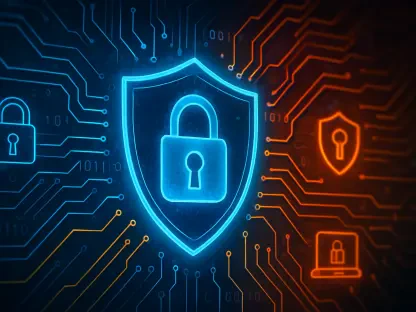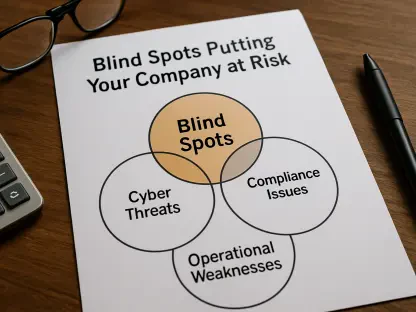In recent years, the landscape of cyber threats has shifted dramatically, with nation-state hackers becoming increasingly bold and sophisticated in their attacks. The primary targets are no longer confined to sensitive information and espionage; the focus has expanded to include critical infrastructure and supply chains. This growing menace is epitomized by recent incidents such as the hacks on US networks and telecommunications by groups like Silk Typhoon and Salt Typhoon, both of which are believed to have ties to adversarial nations like China. These incidents underscore the dire need for enhanced cybersecurity measures and proactive vigilance to safeguard essential services and operations.
The Evolving Tactics of Nation-State Hackers
Nation-state hacking has evolved significantly from its early days of data theft and intelligence gathering. Today, these cyber threats are more geared toward manipulation and disruption of systems, posing a far more significant threat to critical infrastructure. The expanded attack surface, largely due to the prevalent use of third-party vendors, contractors, and cloud service providers, has created more opportunities for these adversarial groups to infiltrate and compromise essential networks. This evolution in tactics necessitates a comprehensive approach to cybersecurity, emphasizing the importance of vigilance and proactive measures.
Security expert Sarah Cleveland, a former US Air Force cyber officer, highlights the major risk posed by supply-chain attacks. She stresses that the reliance on government intervention is not enough to fend off these sophisticated threats. Instead, organizations need to adopt rigorous cybersecurity practices, including enforcing zero-trust security policies, implementing multi-factor authentication, and maintaining visibility of network activities. Companies must be ever-watchful of their business partners and operations to detect and deter any potential threats promptly.
The reliance on external entities in the supply chain significantly increases the risk of exposure to cyberattacks. A prime example of this is the use of Chinese-manufactured solar inverters, which send data back to China, presenting a complex challenge for supply-chain security. Cleveland notes the critical need for organizations to invest in tools and technologies that provide real-time visibility into their networks and data flows. This investment allows companies to identify potential breaches and take swift action to mitigate the risk, ensuring the security of their critical infrastructure.
Comprehensive Security Strategies
Implementing robust cybersecurity measures is essential for organizations, especially those managing critical infrastructure. Comprehensive security strategies should encompass a wide range of best practices and proactive measures, enabling organizations to enhance their defenses against nation-state hackers. This includes adopting stringent access controls, conducting regular security audits, and training employees to recognize and respond to potential threats. The goal is to create a multi-layered defense system that minimizes vulnerabilities and maximizes the effectiveness of preventative measures.
Cleveland emphasizes the importance of knowing who has access to data and being able to quickly remove or restrict access if necessary. This knowledge is vital for preventing unauthorized access and ensuring that any breach can be contained rapidly. Multi-factor authentication and zero-trust policies are critical components of a robust security strategy, ensuring that only authorized users can access sensitive systems and data.
Moreover, maintaining visibility of network activities is essential for detecting and responding to threats in real-time. Organizations should employ advanced monitoring and detection tools that can identify unusual patterns of behavior or anomalies within the network. This proactive approach enables security teams to respond swiftly and effectively to mitigate potential risks before they escalate into full-blown cyberattacks.
The Growing Urgency for Proactive Measures
Given the increasing boldness and sophistication of nation-state hackers, the urgency for organizations to adopt proactive cybersecurity measures has never been greater. The traditional reactive approach is no longer sufficient to address the evolving threat landscape. Instead, a shift towards proactive, comprehensive security strategies is essential to safeguard critical infrastructure from these persistent and sophisticated threats.
Nation-state hackers are continually refining their tactics, making it crucial for organizations to stay ahead of the curve by investing in the latest cybersecurity technologies and practices. Regular updates to cybersecurity protocols, continuous monitoring, and real-time threat intelligence are all vital components of a robust defense strategy. Organizations must also ensure that their employees are adequately trained and aware of the latest cyber threats and best practices for mitigating them.
Ultimately, the battle against nation-state hackers requires a collective effort from both the private and public sectors. While government intervention and support are essential, individual organizations must also take responsibility for their cybersecurity posture. By adopting comprehensive and proactive security measures, organizations can significantly reduce their risk of falling victim to nation-state hackers, ensuring the safety and continuity of their critical infrastructure.
Steps to Ensure a Secure Future
In recent years, the landscape of cyber threats has dramatically evolved, with hackers tied to nation-states becoming more audacious and technologically advanced in their attacks. The focus of these cybercriminals has broadened beyond just sensitive information and espionage; it now also encompasses critical infrastructure and supply chains. This heightened risk is exemplified by incidents involving US networks and telecommunications, targeted by groups such as Silk Typhoon and Salt Typhoon, which are believed to be linked to countries like China.
These cybersecurity breaches highlight the urgent need for robust cybersecurity measures and proactive vigilance to protect essential services and operations. As cyber threats continue to escalate in both scope and sophistication, the imperative to strengthen defenses against such malign activities becomes ever more critical. This evolving threat underscores the need for continuous advancements in cybersecurity strategies, collaboration among nations, and heightened awareness to address and mitigate the rising risks to global security.









